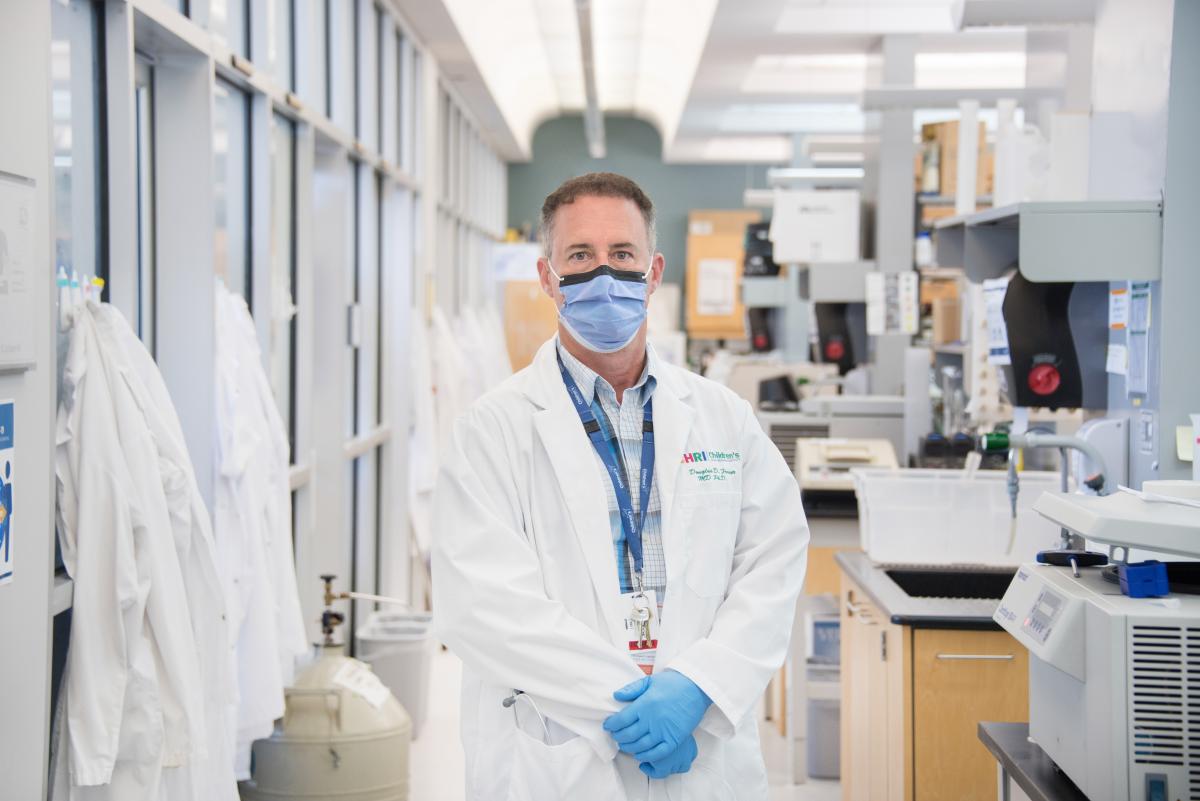A team from Lawson Health Research Institute and Western University in London, Ont., is reporting groundbreaking discoveries that researchers hope will lead to better outcomes for those seriously ill due to the novel coronavirus.

The two small studies, published back-to-back this week in Critical Care Explorations, focus on identifying ways to predict the severity of illness and on understanding and treating serious blood clots.
“If we know ahead of time that someone’s going to get dreadfully ill and we think we have a variety of things that might help, we may implement them much, much earlier,” lead researcher Dr. Douglas Fraser told Global News.
“We (also) want to have really frank, transparent talks with families and with patients. ‘What are your wishes? How aggressive do you want us to be, particularly knowing some of this information?'”
The findings still need to be validated with larger groups of patients, explains Fraser.
The first study identified six molecules (CLM-1, IL12RB1, CD83, FAM3B, IGFR1R and OPTC) that can be used as biomarkers to predict how severely ill a patient is likely to become.
For the study, researchers measured 1,161 plasma proteins from the blood of 30 participants: 10 with COVID-19, 10 with other infections admitted to London Health Sciences Centre’s ICU, and 10 healthy control participants.
The team identified six molecules that were elevated in COVID-19 patients who became more severely ill, and when measured on a patient’s first day in intensive care, those molecules could be used to predict “which patients will survive following standard ICU treatment.”
If medical teams are able to predict whether a patient is at higher risk of death, they may consider moving forward with potentially risky interventions sooner, the researchers said.
The team said they’re also hoping the findings can be used to better design clinical trials by grouping patients based on their risk.

Get weekly health news
“If we’re looking at a particular therapy and we inadvertently give it to patients who are going to do poorly, we may not see a reasonable effect early on and we may actually abandon that therapy because we think it’s not going to work,” Fraser said.
“When in fact, maybe in the other group of patients that were destined to do quite well, they may respond much, much faster, for example.”
The second study focused on identifying how blood clots develop in some patients with COVID-19, as well as looking at possible treatments based on that knowledge.
Researchers say blood clots in the lung’s small blood vessels are a major complication occurring “in most critically ill COVID-19 patients.” At first, it was suspected that clotting mechanisms in the blood were being “put into overdrive” and many clinicians have been treating them with anti-coagulant therapies, but Fraser’s team believes there’s a different reason for the clotting.
Using the same blood samples, the team found the COVID-19 patients had elevated levels of three molecules (hyaluronic acid, syndecan-1 and P-selectin).

The first two molecules are products that are broken down from small hair-like structures which line the inside of the blood vessels, while the third helps make platelets and the inner lining of blood vessels stick to each other.
“We suspect the body’s immune response is producing enzymes that shear off these little hair-like structures, inflaming blood vessels and making them a welcoming environment for platelets to form clots.”
Researchers suggest two potential therapies: platelet inhibitors that stop platelets from sticking, and molecules that protect and restore the inner lining.
In both studies, lead researcher Dr. Douglas Fraser said the scientists have discovered world firsts.
“We were the first to identify the mechanisms involved in blood-clotting. We were the first to come up with the biomarkers which have great ability to tell us how severe someone’s going to be,” he said.
“I feel very, very positive of what we’re doing here, no doubt, but let’s be cautious. Let’s make sure we’re repeating it elsewhere, let’s make sure we’re making the proper decisions for our patients.”













Comments